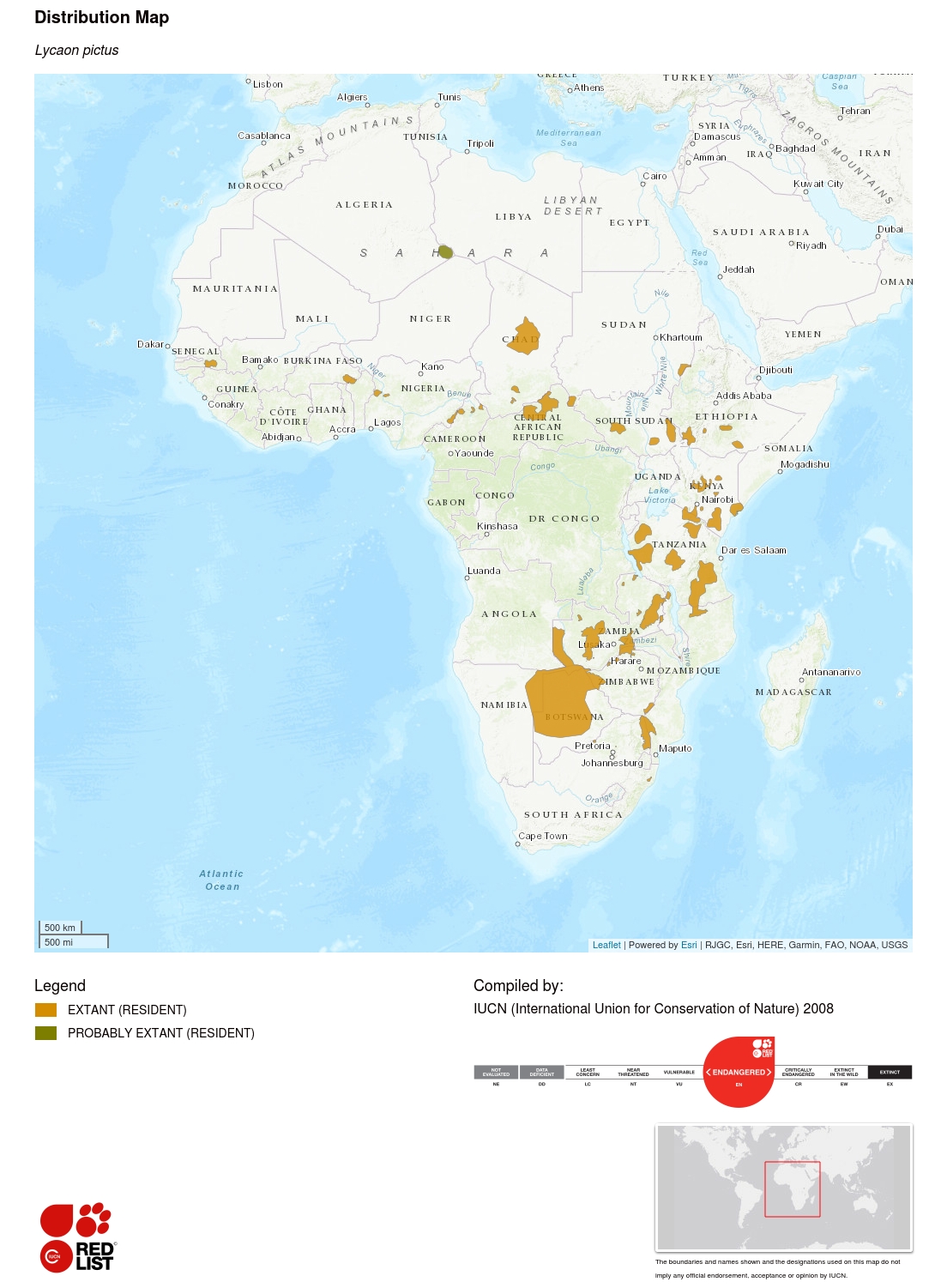About Wild Dog
The wild dog is one of the world’s most endangered mammals. The largest populations remain in southern Africa and the south part of East Africa (especially Tanzania and northern Mozambique). Wild dogs are social and gather in packs of around ten individuals, but some groups number more than 40. They are opportunistic predators that hunt medium-sized ruminants, such as gazelles. In a sprint, African wild dogs can reach speeds of more than 44 miles per hour.
African Wild Dogs are no longer found in much of their historic range. Their populations are now primarily only found in southern Africa and the southern regions of East Africa.
Distribution

Conservation Status
According to the IUCN, lions are an endangered species, with approximately 1 409 mature individuals remaining in the wild. This number of mature individuals continues to decline, with the overall population trend decreasing.
The most significant threats to wild dog populations are habitat loss and human-wildlife conflict.
Habitat and Ecology
Preferring short-grass plains, semi-desert, and savannah, wild dogs are found in various habitats. They’ve historically been located in densely forested areas and desert habitats. It seems their current distribution is influenced heavily by human activities and prey availability.
African wild dogs primarily hunt antelope of mid-size, routinely taking down prey significantly heavier than themselves. They’ve been known to prey on impala, greater kudu, and wildebeest but have the confidence to pursue (often unsuccessfully) much larger species like buffalo and eland.
In leaner times, African wild dogs will also hunt small prey like lizards and hares and steal eggs.
Read more about Lions
 Blog
Blog
BBC One: Serengeti – The Wild Dog
By Britta Foulis – Content Marketing Manager BBC One’s latest mini-series, Serengeti, aired its first episode earlier this month. Each episode follows the lives and intertwined stories of…
 Blog
Blog
From the field | Five elusive African safari animals
We asked some our guides about their favourite elusive African safari animals, and narrowed it down to the following five to add to your African safari checklist.
 Blog
Blog
Human-Wildlife Conflict
By Warren Glam – Content Writer For many East African farmers, who work through every scorching hour they can find, night is far longer than day. At night they must wait, with their beds little …






